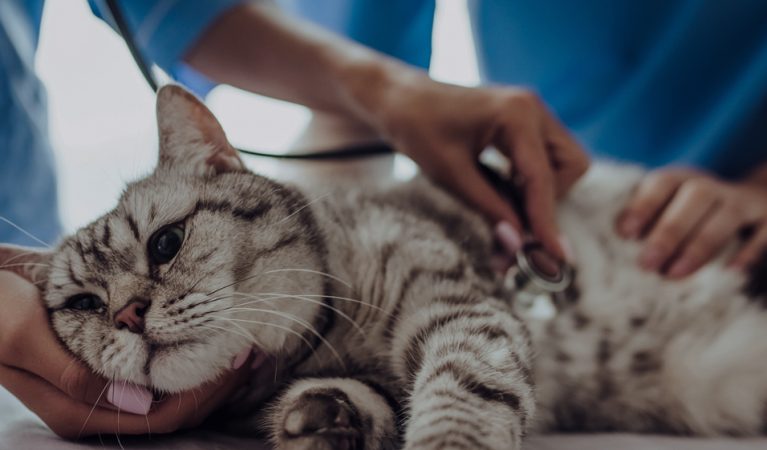Pets Clinic Emergency and Critical Care: Saving Lives When Every Second Counts

As pet owners, our furry companions hold a special place in our hearts. We cherish their unconditional love, playful antics, and the joy they bring into our lives. However, just like us, pets can experience medical emergencies that require urgent attention. In such critical situations, pets clinic emergency and critical care services become the lifeline that can make all the difference between life and death for our beloved animals. In this blog, we will delve into the world of emergency and critical care for pets, the specialized services provided by pets clinics, and the vital role they play in saving lives when every second counts.
Understanding Pets Clinic Emergency and Critical Care
Pets clinic emergency and critical care refer to the specialized medical attention and treatments provided to pets facing life-threatening situations. These critical situations can arise due to various reasons, such as accidents, injuries, sudden illnesses, or severe health complications. The primary goal of emergency and critical care services is to stabilize the pet’s condition, alleviate pain, and provide immediate medical interventions to improve their chances of recovery.
Key Components of Pets Clinic Emergency and Critical Care
1. Swift Triage and Evaluation
Upon arrival at the pets clinic, a trained team of veterinary professionals conducts a swift triage and evaluation to assess the pet’s condition. Triage helps prioritize cases based on the severity of the condition, ensuring that the most critical cases receive immediate attention.
2. Advanced Diagnostic Imaging
Pets clinic emergency and critical care units are equipped with advanced diagnostic imaging tools, such as X-ray machines, ultrasound, and CT scans. These diagnostic tools help identify internal injuries and provide valuable insights into the pet’s condition.
3. Intensive Monitoring
Critical care units are equipped with state-of-the-art monitoring systems that keep a close watch on the pet’s vital signs, including heart rate, respiratory rate, blood pressure, and oxygen levels. This continuous monitoring ensures timely interventions if any deterioration occurs.
4. Emergency Surgery
In cases where immediate surgical intervention is required, the pets clinic’s surgical team is prepared to perform emergency surgeries to address injuries and internal health issues.
5. Pain Management
Pets in critical condition often experience pain and discomfort. Pain management is an integral part of emergency and critical care to ensure the pet’s well-being.
6. Intravenous Fluids and Medications
Intravenous fluids and medications are administered to stabilize the pet’s condition and maintain proper hydration and electrolyte balance.
7. Oxygen Therapy
For pets with breathing difficulties or respiratory distress, oxygen therapy is provided to ensure adequate oxygen supply to vital organs.
8. Blood Transfusions
In situations where a pet has suffered severe blood loss, blood transfusions may be necessary to restore blood volume and oxygen-carrying capacity.
9. Wound Management
In the case of injuries or wounds, appropriate wound management techniques are employed to prevent infections and promote healing.
10. Nutritional Support
Pets in critical condition may require special nutritional support to meet their energy needs and aid in recovery.
When to Seek Pets Clinic Emergency and Critical Care
Recognizing the signs of a pet emergency and seeking prompt care can be life-saving. Some indicators that your pet may require emergency and critical care include:
1. Difficulty Breathing
Rapid or labored breathing, coughing, or choking may indicate respiratory distress.
2. Severe Bleeding
Uncontrolled bleeding from injuries or wounds requires immediate attention.
3. Ingestion of Toxic Substances
If your pet ingests toxic substances, such as chocolate, medications, or household chemicals, seek emergency care immediately.
4. Unconsciousness or Collapse
If your pet loses consciousness or collapses, it is a critical situation that requires immediate attention.
5. Severe Pain or Distress
Signs of extreme pain or distress, such as whining, vocalization, or restlessness, should not be ignored.
6. Seizures
Seizures in pets require immediate evaluation and care.
7. Inability to Urinate or Defecate
A pet’s inability to urinate or defecate may indicate a blockage or other serious health issue.
8. Traumatic Injuries
Accidents or injuries, such as fractures, dislocations, or head trauma, require immediate medical attention.
The Role of Pets Clinic Emergency and Critical Care in Saving Lives
Pets clinic emergency and critical care units play a vital role in saving lives by providing immediate medical attention, stabilization, and advanced treatments. These specialized services are designed to act swiftly and effectively in situations where every second counts. The dedicated and skilled veterinary teams work tirelessly to ensure that pets receive the best possible care during their most vulnerable moments.
Conclusion
Pets clinic emergency and critical care services are the guardians of our furry companions in times of distress. Their rapid response, advanced medical treatments, and unwavering dedication have saved countless pet lives. As pet owners, knowing when to seek emergency care and having access to specialized critical care facilities can make all the difference in ensuring the well-being and recovery of our beloved pets. Remember, in an emergency, time is of the essence, and seeking immediate care can be the key to giving our furry friends a second chance at a happy and healthy life.
